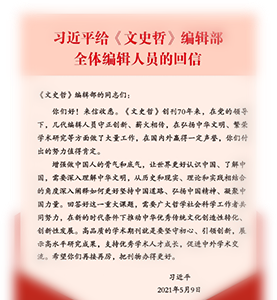《孝经》是先秦儒家在孝道问题上建构的最终理论体系,其内部论证是一个有机的辨证体,具有系统性、严密性、完整性等特点。《孝经》进行了“天人”、“君父”、“义利”三大关系的思考与阐述,完成了孝的本体论论证、孝核心内容的认定、孝道践行准则等基本问题。《孝经》定型了中华民族的孝道观,所建构的三大内在逻辑论证,对传统中国文化产生了至为深刻的影响。厘清此间的内在逻辑与相互作用,不仅有助于理解古人关于《孝经》实乃六艺之总汇的论断,更能为当今社会在个体、家庭、国家三者之间关系的思考提供有益的帮助。
An Analysis of the Demonstration Logic of the Classic of Filial Piety
Wang Chenglue
The Classic of Filial Piety is an ultimate system of theory on filial piety constructed by the pre-Qin Confucians. The internal demonstration of the classic is an organic dialectic system characterized by its systematicness, rigor, and integrity. The classic made reflection and elucidation on three kinds of relation between Heaven and human, monarch and father, as well as rightousness and benefit, and gave ontological demonstration, affirmation of core content, as well as practice principles of filial piety. The Classic of Filial Piety finalized the idea of filial piety of the Chinese nation, and the three kinds of internal logic elaborated and constructed in this book deeply influenced traditional Chinese culture. To clarify the internal logic and interaction here can not only help to understand the judgment that the Classic of Filial Piety is the aggregation of the Six Arts made by ancient people, but also provide help for thinking about the relation among individual, family, and the country in today’s society.


